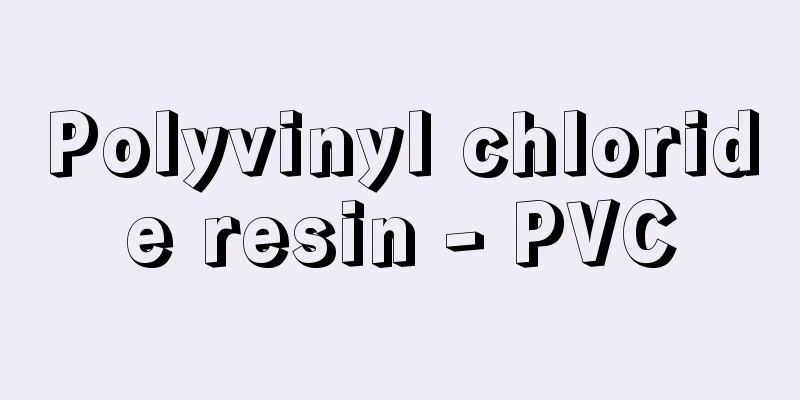Polyvinyl chloride resin - PVC

|
Abbreviated as PVC resin. General formula Source: Morikita Publishing "Chemical Dictionary (2nd Edition)" Information about the Chemical Dictionary 2nd Edition |
|
略称PVC樹脂.一般式 出典 森北出版「化学辞典(第2版)」化学辞典 第2版について 情報 |
>>: Vinyl Chloride - Vinyl Chloride
Recommend
Gamma-glutamyltranspeptidase
[EC 2.3.2.2.]. Also known as γ-glutamyltransferase...
Timotheos I
728‐823 Nestorian Catholicos. Reigned 780-823. He ...
Development Assistance Group
...The predecessor of the DAC was the Development...
Persecution - Hounan
This refers to persecution or oppression suffered...
zarabanda
…Though the origins of dance in Spain are very ol...
Mounier, Emmanuel
Born: April 1, 1905 in Grenoble [Died] March 22, 1...
Janneau, G.
...Then, in the second half of the 19th century, ...
Acta Sanctorum (lives of saints)
Documents that record the words, deeds, and lives ...
Aokawa Mozuku - Aokawa Mozuku
...The main characteristics of the classification...
Camphor (English spelling)
Chemical formula: C 10 H 16 O. Also known as camph...
chaperon
...This is said to reflect the shape of the spire...
Tonami Plain - Tonami Heiya
Western Toyama Prefecture, an alluvial fan-shaped ...
Karla Guru - Karla Guru
…It is a transliteration of the Sanskrit kālāguru...
Window - Mado (English spelling)
An opening in a wall or roof of a building throug...
Takefu [city] - Takefu
An old city in central Fukui Prefecture. It was in...









